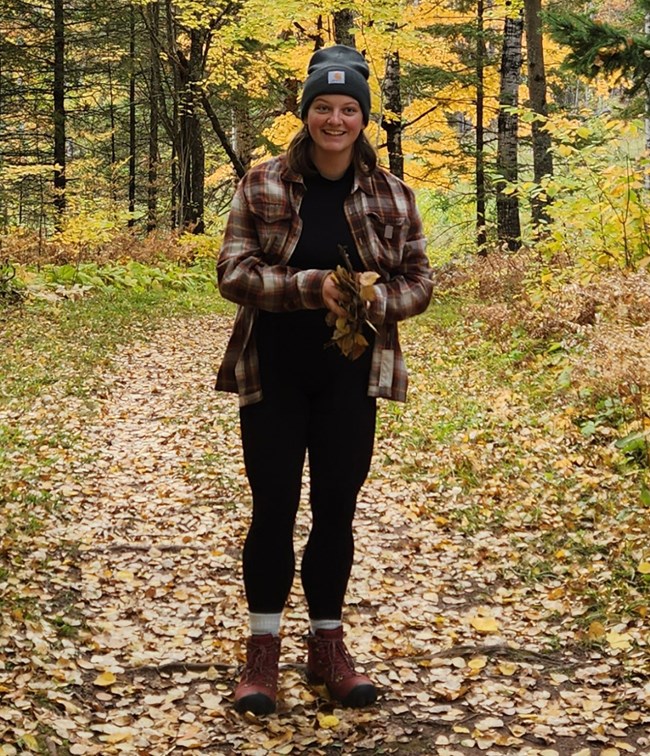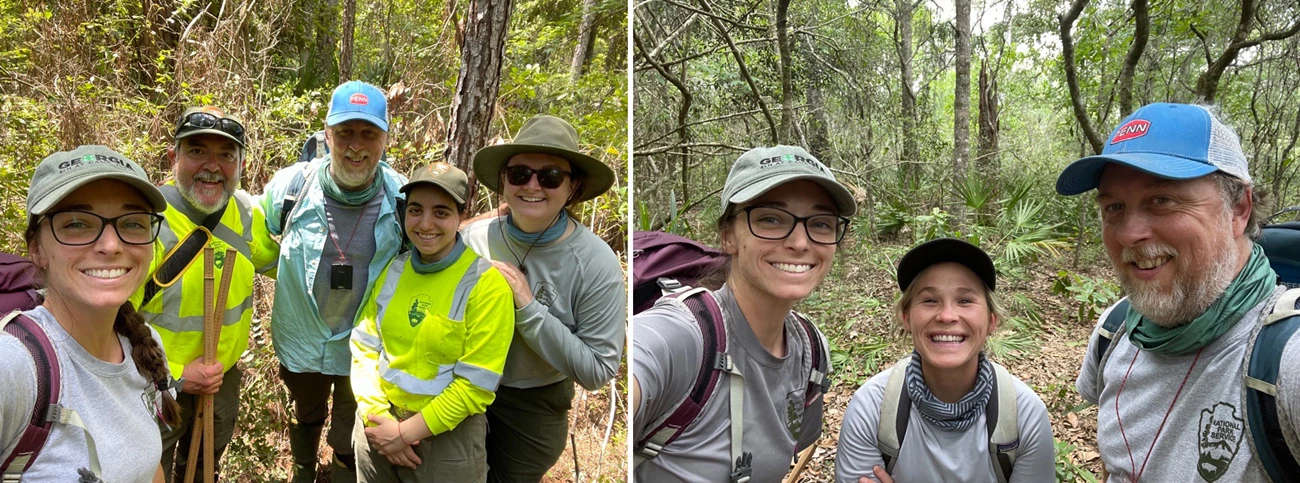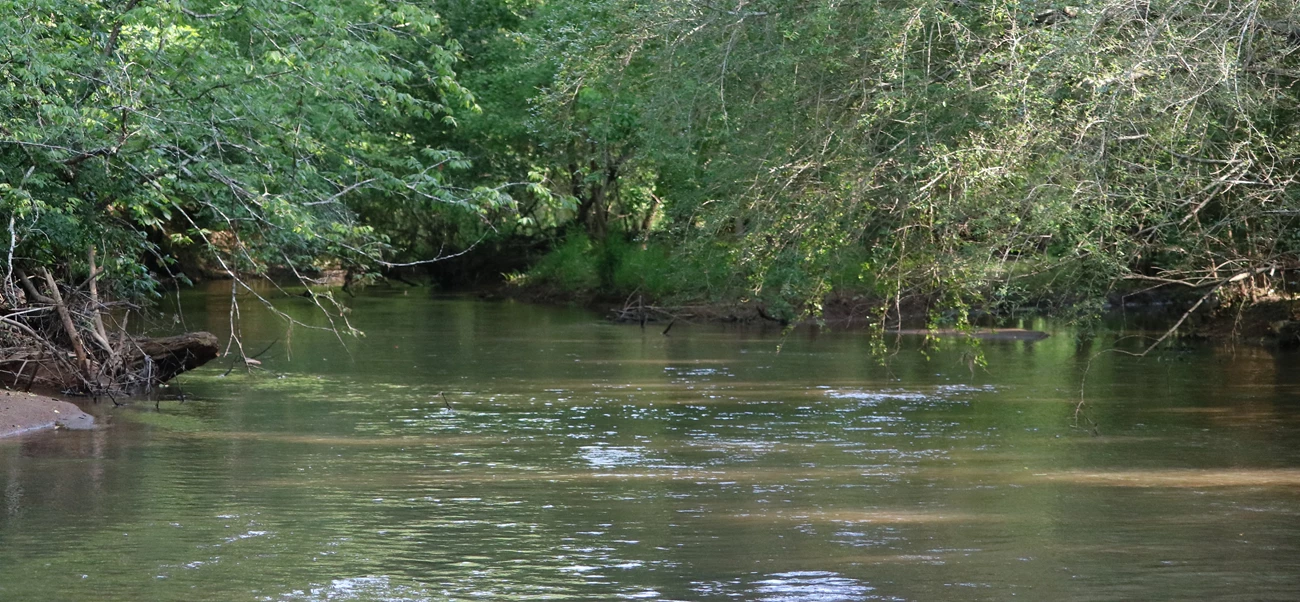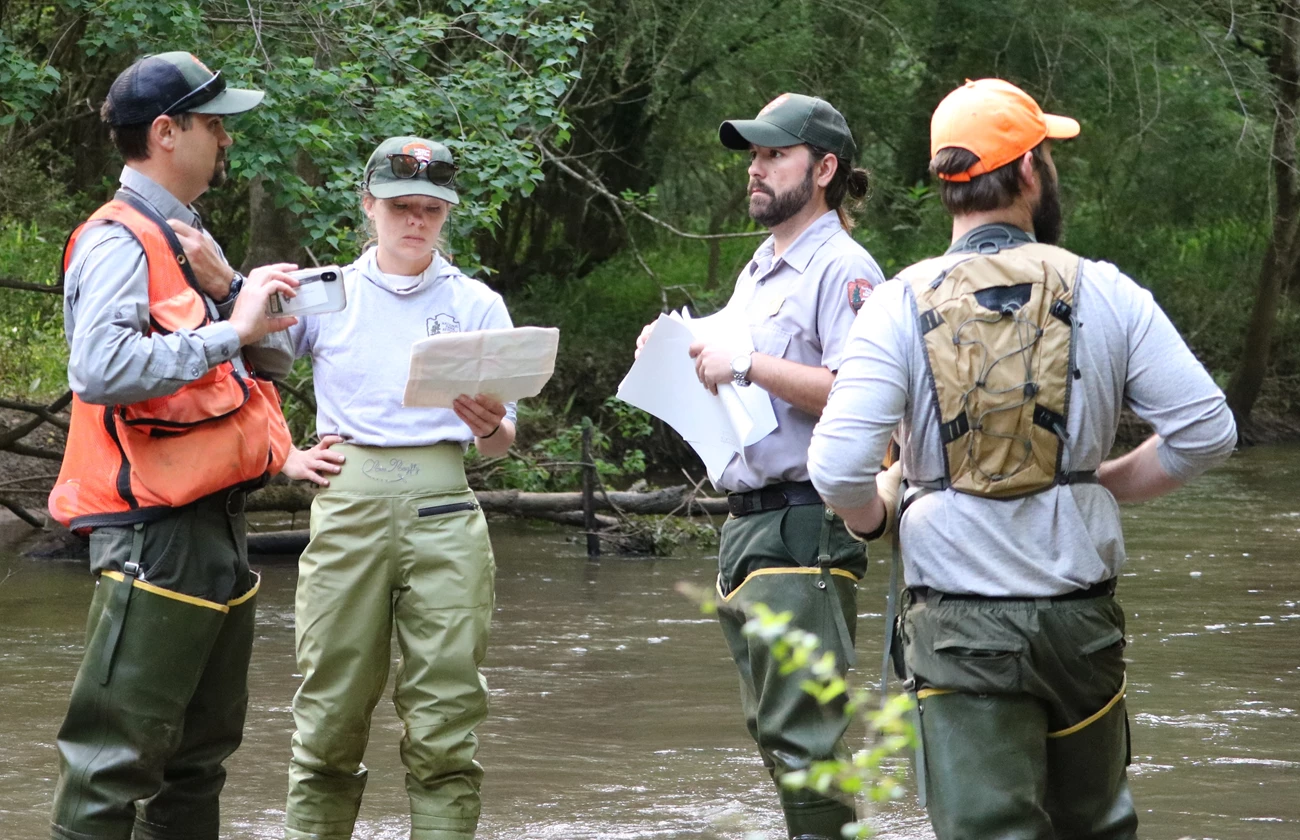Last updated: August 25, 2025
Article
SECN Highlights June 2023
Wendy to Detail at National Office
Wendy Wright, SECN Data Manager, will begin a 120-day detail starting June 5. Wendy will be working as a Data Scientist with the Inventory and Monitoring Division Central Support Office in Fort Collins, Colorado. She will be working with IMD Program Managers and Data Management staff to evaluate support needs to publish data packages relative to climate change. Congratulations Wendy!

Photo submitted
SIP Intern, Alyssa Sanderson, joins the Vegetation Team
Alyssa Sanderson is the Scientists in Parks (SIP) Ecology intern for 2023 at the Southeast Coast Network. Originally from southeast Michigan, she has always loved learning about the outdoors and spending time outside. After graduating with a Bachelor of Science degree in Environmental Engineering from Michigan State University, Alyssa has been heavily involved in the public service sector, serving as a Team Leader for the AmeriCorps National Civilian Community Corps (NCCC) twice, a Crew Leader for the Wisconsin Conservation Corps, and a Crew Leader for a Roving Forest Management Crew. These experiences helped her develop a love for ecosystem restoration and land management. She is excited about this internship because it will give her more insight into the planning and decisions that go into natural resource management. When she is not working, Alyssa loves to hike, rollerblade, crochet, and explore new places. Welcome aboard Alyssa!

Photo submitted
Elika Bozorgi is the New Data Intern
The Southeast Coast Network welcomes a new data intern, Elika Bozorgi. Elika is a PhD student in Computer Science at the University of Georgia. She is partnering with the network through the Piedmont South Atlantic Coast CESU program. Originally from Tehran, Iran, she earned a bachelor's degree in Computer Engineering and started work at a top-ranked medical-equipment company as technical engineer and then a technical manager. Elika moved to the United States in 2018 to earn her PhD. During her time at UGA, she has served as a teaching assistant for several computer science courses, as well as a lab instructor and research assistant in both the computer science department and UGA's Terry College of Business. Beyond campus, she has worked as a data analyst at Elevance Health Company. Elika loves food and working out. During her free time, she is either hanging out with friends or at the gym. Elika will be providing data management support to the Southeast Coast Network and her first project will be developing a reporting dashboard for the Water-Quality monitoring program, and providing maintenance support for the water-quality database. Welcome aboard Elika!

NPS photo / Eric Starkey
Eric presents at National Water Quality Meeting
Aquatic Ecologist Eric Starkey presented "A Tale of Two Datasets" at the National Water Quality Monitoring Council's 13th National Monitoring Conference in April at Virginia Beach, Virginia. The presentation, a collaborative effort with the Office of Water at the Environmental Protection Agency, highlighted the connection between the Southeast Coast Network’s estuarine water-quality monitoring and the EPA's National Coastal Condition Assessment (NCCA). Methods for the SECN’s parkwide assessments of water-quality are based on the EPA’s NCCA; therefore, data are comparable across each program’s sample frame. The objectives of the study were to compare eutrophication-related indicators from sites sampled by SECN and NCCA in Pamlico and Core Sound and address these questions:
- Do NPS sites adjacent to the park indicate similar condition as the NCCA sites sampled across the larger Sound area?
- Do any similar patterns emerge when comparing the data?
Findings indicated water-quality conditions during the comparison year (2015) were consistently better at near shore areas of Cape Hatteras and Cape Lookout National Seashores whereas sites assessed by the NCCA, in more inland locations and further from the park waters, appeared more impacted by human activities which may be due to less exchange with the ocean. In addition, chlorophyll a levels, an indicator of eutrophication, were elevated in locations nearer to population centers. This collaboration between NPS and EPA highlights the benefit of using consistent methods so park water-quality conditions can be placed in a larger regional context.
For more information about both programs and results of recent monitoring check out:
U.S. EPA National Coastal Condition Assessment 2015 and DataStore - Assessment of estuarine water and sediment quality at Cape Hatteras National Seashore and Cape Lookout National Seashore: 2021 data summary. (nps.gov).
Ches Published in Earth's Future
Coastal Ecologist William "Ches" Vervaeke recently co-authored "Mangrove Trees Outperform Saltmarsh Grasses in Building Elevation but Collapse Rapidly Under High Rates of Sea-Level Rise" for Earth's Future, a research publication of AGU (American Geophysical Union). The article focused on the ongoing conversion of coastal wetlands from non-woody marsh grasses to mangrove forests in subtropical transition zones such as northeast Florida due to a warming climate. This conversion will enhance coastal protection and carbon storage. The study looked at the effects of sea-level rise on this conversion. The report is available at Mangrove Trees Outperform Saltmarsh Grasses in Building Elevation but Collapse Rapidly Under High Rates of Sea‐Level Rise - Morris - 2023 - Earth's Future - Wiley Online Library

NPS photos/ Mallorie Davis

NPS photo / Wendy Wright

NPS photo / Wendy Wright

Recent Publications
The Southeast Coast Network recently published the following reports:
- Post Tropical Storm Ian and Hurricane Nicole Storm Report 2022 for Fort Matanzas National Monument. Available at: DataStore - Shoreline change at Fort Matanzas National Monument: Post Tropical Storm Ian and Hurricane Nicole Storm Report 2022 (nps.gov)
Tags
- national water quality monitoring council
- 13th national monitoring conference
- epa
- national coastal condition assessment
- ncca
- cape hatteras national seashore
- cape lookout national seashore
- canaveral national seashore
- fort matanzas national monument
- fort frederica national monument
- cumberland island national seashore
- coastal wetlands monitoring
- surface elevation table
- shoreline change monitoring
- vegetation community monitoring
- terrestrial vegetation monitoring
- fort pulaski national monument
- wadeable stream habitat monitoring
- horseshoe bend national military park
- kennesaw mountain national battlefield park
- ocmulgee mounds national historical park
- water quality monitoring
- estuarine water and sediment quality
- congaree national park
- chattahoochee river national recreation area
- landbird community monitoring
- vocal anuran community monitoring
- automated recording devices
- ards
- tropical storm ian
- hurricane nicole
- secn network highlights
